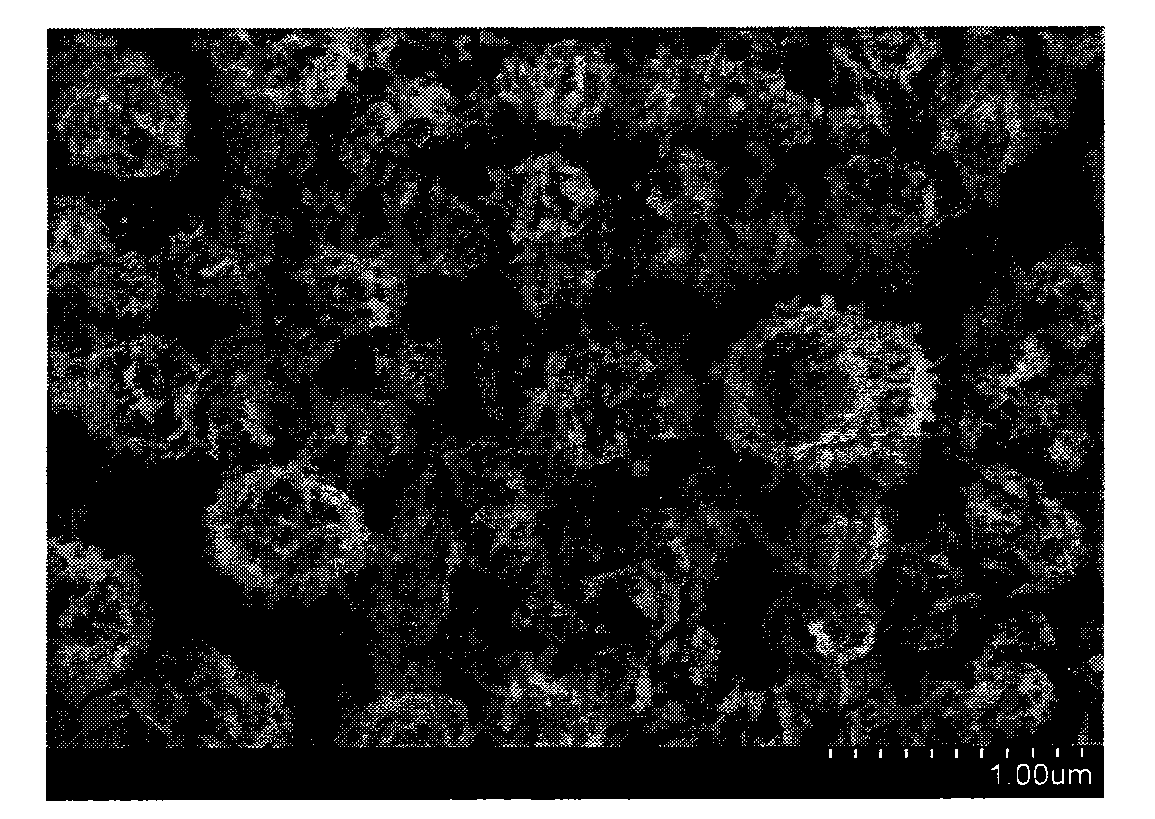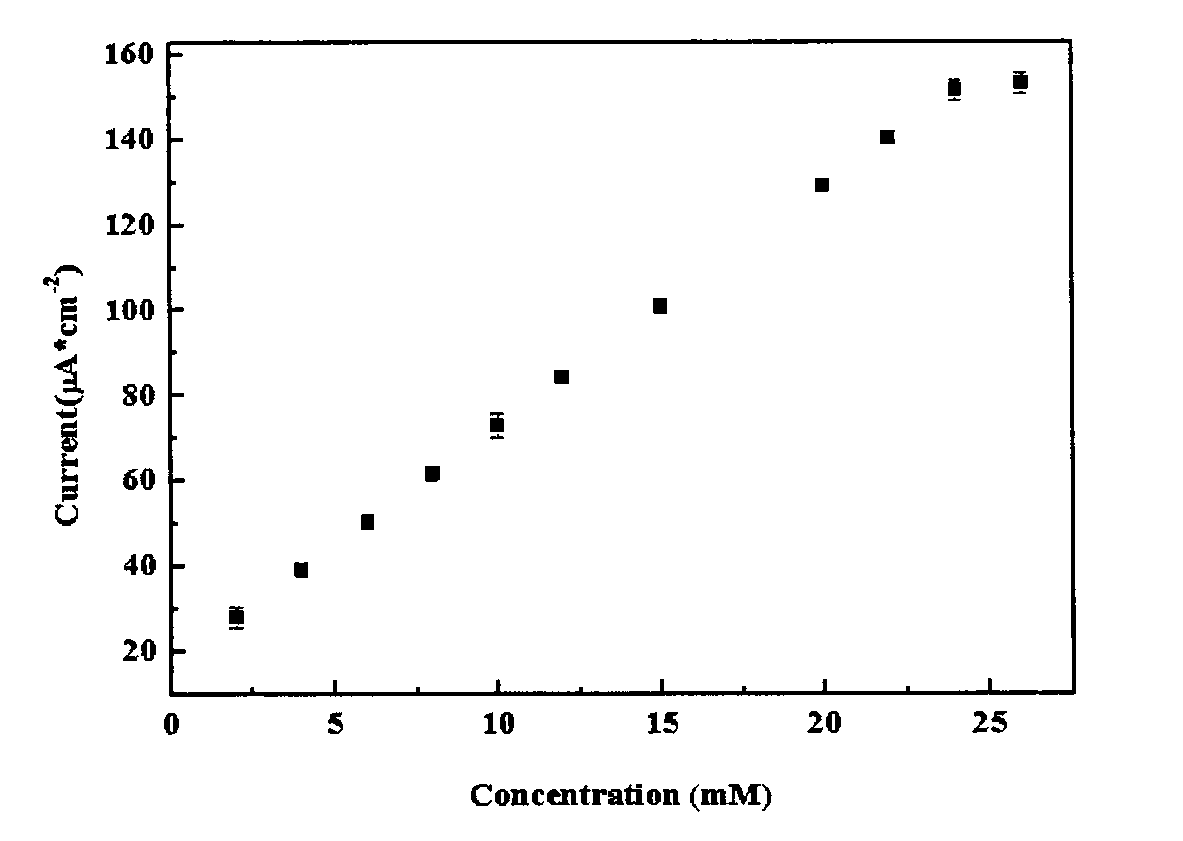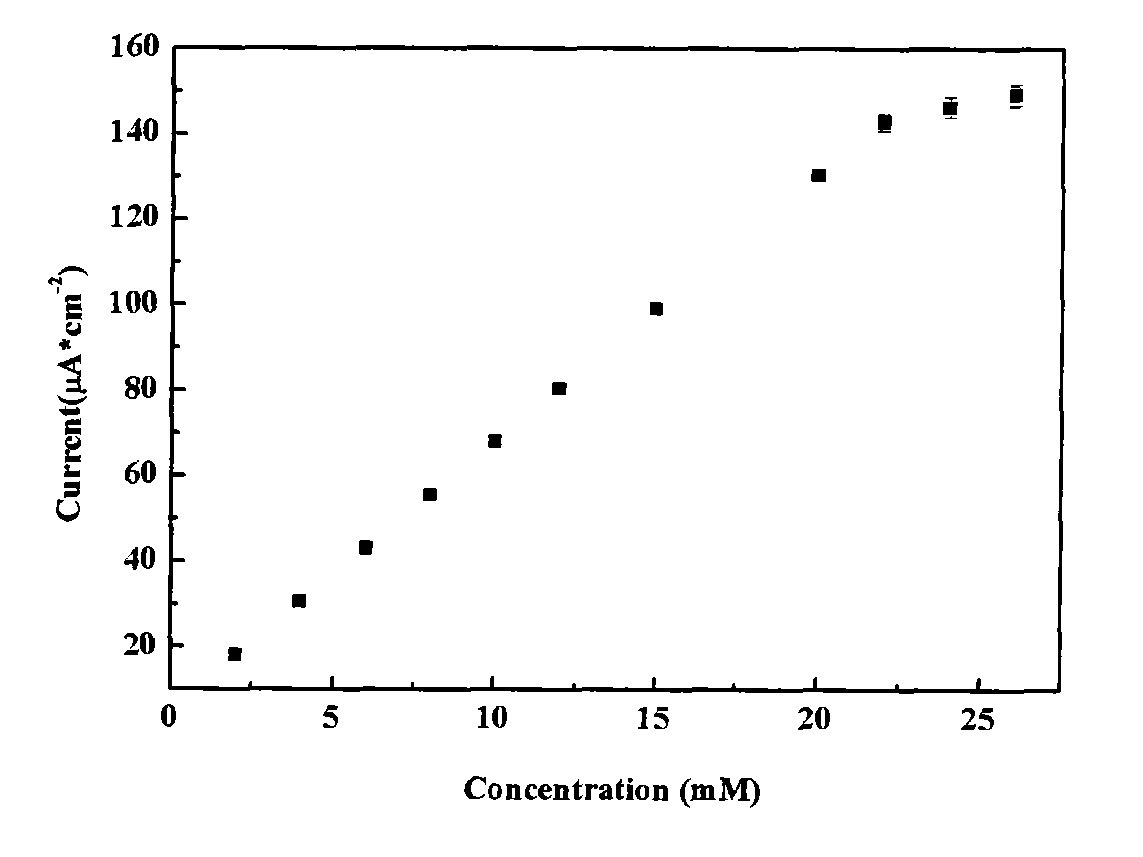Micro-needle enzyme-free glucose sensor electrode and preparation method thereof
A glucose sensor and microneedle technology, applied in the field of biosensors, can solve the problems of low electroactivity of stainless steel, small diameter of acupuncture needle electrodes, small surface area, etc., and achieve the effect of large specific surface area and improved electrocatalytic performance
- Summary
- Abstract
- Description
- Claims
- Application Information
AI Technical Summary
Problems solved by technology
Method used
Image
Examples
Embodiment 1
[0026] Soak the stainless steel needle electrode in acetone, and ultrasonically clean it to remove the surface oil, then wash it repeatedly with ethanol, ultrasonically, dry it in the air, place it in a PBS solution with a pH value of 7.0, and activate it by electrochemical cyclic voltammetry scanning for 10 cycles . Then, the graphene oxide was dispersed in a chitosan solution with a mass concentration of 0.5%, and after magnetic stirring at room temperature for 4 hours, polyvinyl alcohol, chloroplatinic acid and lead acetate were added to the above solution, and the concentration of chloroplatinic acid in the mixed solution The concentration of lead acetate is 25mg / ml, the concentration of lead acetate is 50mg / ml, the concentration of polyvinyl alcohol is 8%, and the concentration of graphene oxide is 7mg / ml. Finally, the above solution was injected into a syringe with a needle (No. 10, inner diameter 0.6 mm, length 15 mm, and the tip was ground flat), and the syringe was fi...
Embodiment 2
[0030] The operation process and experimental conditions of Example 2 are the same as those of Example 1, except that the interval time of ultrasonic vibration is changed to 3 minutes.
[0031] The prepared electrode was used as the working electrode, the Pt wire electrode was used as the auxiliary electrode, and the saturated calomel electrode was used as the reference electrode. Into 30ml of blank PBS, 30μL of 1.5mol / L glucose solution was added dropwise successively, and after each dropwise addition, differential pulse voltammetry (DPV) measurement was carried out. figure 2 The results show that the sensitivity of the prepared sensor is 5.62μA*(cm -2 mM -1 ), the linear monitoring range is 2-24mM, and the detection limit is 1.6μM. Compared with the sensor disclosed in the patent ZL201010275952.6, it has wide linear range, low detection limit and high sensitivity.
Embodiment 3
[0033] The operating process and experimental conditions of Example 3 are the same as in Example 1, except that the concentration of graphene oxide is changed to 10 mg / ml.
[0034] The prepared electrode was used as the working electrode, the Pt wire electrode was used as the auxiliary electrode, and the saturated calomel electrode was used as the reference electrode. Into 30ml of blank PBS, 30μL of 1.5mol / L glucose solution was added dropwise successively, and after each dropwise addition, differential pulse voltammetry (DPV) measurement was carried out. image 3 The results show that the sensitivity of the prepared sensor is 6.24μA*(cm -2 mM -1), the linear monitoring range is 2-22mM, and the detection limit is 1.42μM. Compared with the sensor disclosed in the patent ZL201010275952.6, it has wide linear range, low detection limit and high sensitivity.
PUM
| Property | Measurement | Unit |
|---|---|---|
| Diameter | aaaaa | aaaaa |
| Diameter | aaaaa | aaaaa |
| Sensitivity | aaaaa | aaaaa |
Abstract
Description
Claims
Application Information
 Login to View More
Login to View More - Generate Ideas
- Intellectual Property
- Life Sciences
- Materials
- Tech Scout
- Unparalleled Data Quality
- Higher Quality Content
- 60% Fewer Hallucinations
Browse by: Latest US Patents, China's latest patents, Technical Efficacy Thesaurus, Application Domain, Technology Topic, Popular Technical Reports.
© 2025 PatSnap. All rights reserved.Legal|Privacy policy|Modern Slavery Act Transparency Statement|Sitemap|About US| Contact US: help@patsnap.com



